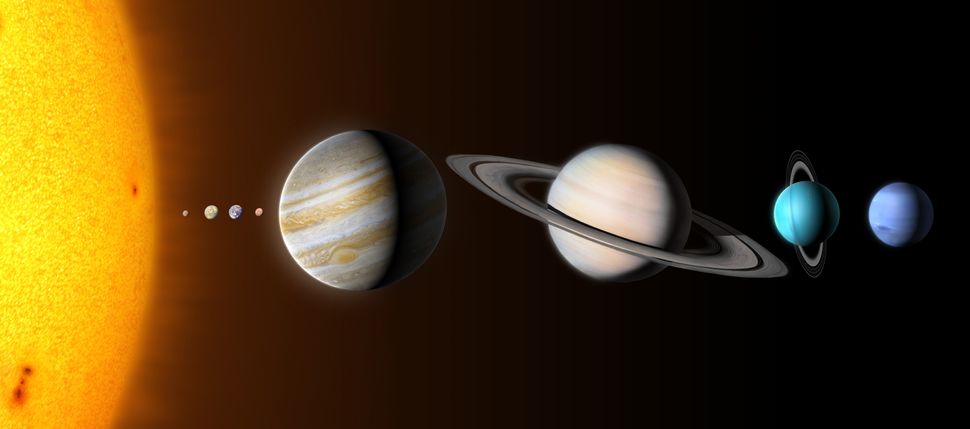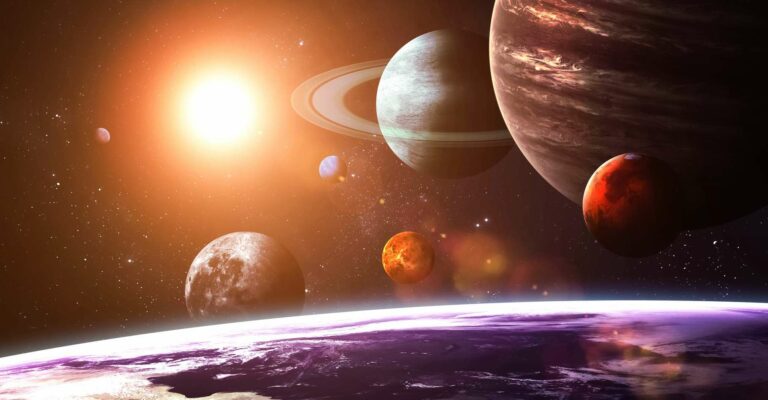Unraveling Space Enigmas: Is the Sun in Motion within the Solar System?
From a young age, we are taught to comprehend that the planets within our solar system undergo changes in their positions as they orbit the central star, the sun. However, is it possible that the sun itself moves within the solar system?
In reality, the sun is far from being stationary in the vast universe. It is known that our star orbits the core of the Milky Way at astonishing speeds, reaching up to 450,000 miles per hour (720,000 kilometers per hour), while simultaneously carrying the entire solar system along with it.Moreover, throughout the course of a day, the sun appears to move from our perspective. It traverses across the sky, providing us with breathtaking sunrises and sunsets. Nevertheless, this apparent movement is solely a consequence of the Earth’s rotation and not a result of the sun’s actual motion.
In addition, the sun’s position in the sky changes throughout the course of a year due to Earth’s tilt and its elliptical orbit. This means that at certain times of the year, Earth is closer to the sun than at other times. However, it’s important to note that the sun itself is not physically moving, but rather it appears to shift from our perspective.The length of a planet’s year is determined by the time it takes for the planet to complete one full orbit around the sun. Mercury, being the closest planet to the sun, has the shortest year, lasting only 88 Earth days. On the other hand, Neptune has the longest year in our solar system, lasting 60,182 Earth days or 164.8 Earth years.
Although the sun does experience a slight shift in position within the solar system, it is a relatively small movement. This movement, often referred to as a “wobble,” is caused by the gravitational influences of the other planets in the solar system.Patrick Antolin, a solar scientist at Northumbria University, explains that movement is always relative to a frame of reference. While the solar system as a whole orbits around the center of the Milky Way galaxy, even within the solar system, the sun is not completely static due to its gravitational interaction with the other celestial bodies. This interaction is a two-way street, meaning that as one body pulls on another, it is also being pulled in return, regardless of the size difference between the bodies involved.
He continued by explaining that due to the significant difference in mass between the sun and the other celestial bodies in the solar system, the sun acts as the primary gravitational force and is minimally influenced by the gravity of the planets. As a result, the planets do not technically orbit the sun itself, but rather they and the sun orbit a central point of gravity known as a “barycenter.” The position of this barycenter is determined by the masses of the bodies involved.Given the sun’s immense mass compared to the planets, these barycenters are situated deep within the sun. If a planet has a smaller mass, the barycenter it revolves around will be closer to the core of the sun. Consequently, the closer these barycenters are to the sun’s center, the less the sun will experience any noticeable wobbling due to its orbital motion.
Antolin further explained, “For practical purposes, we can disregard the minor gravitational pull exerted by other planets.” However, our scientific instruments and theories have advanced to a level where we can detect the slight deviations caused by these additional gravitational forces exerted by the other celestial bodies, particularly Jupiter, which is more massive than all the other planets in the solar system combined.
According to the Lick Observatory, the sun is approximately 1,000 times more massive than Jupiter, the fifth planet in the solar system. Consequently, the impact of the gas giant on the sun’s motion is no more than a 40-mile-per-hour “wobble” over the course of Jupiter’s 12-year orbit around the sun.

The detection of stellar wobbles caused by orbiting planets is possible through the shift in the wavelength of light they emit, similar to the Doppler shift. This phenomenon allows for the identification of extrasolar planets, also known as exoplanets, which orbit stars outside of our solar system. When a star wobbles, its light wavelength is stretched and becomes redder as it moves away from Earth, known as “redshift.” Conversely, when a star moves towards Earth, its light wavelength is compressed, resulting in a relatively bluer color, referred to as “blueshift.”
This effect not only enables the detection of stellar wobbles and the presence of exoplanets but also allows for the measurement of certain properties of celestial bodies within distant planetary systems.According to Antolin, “If we can detect the wobble and determine the speeds of these bodies, we can infer their masses and the distances between them. This methodology can be applied to any star system where we can observe the wobble and measure the speeds of the orbiting bodies.”
It is important to note that when multiple massive bodies are involved, the situation becomes more complex. However, numerical models can often assist in determining the most likely number of planets contributing to the observed wobble.
This article is republished from space.com under a Creative Commons license. Read the original article.
Do not forget to share your opinion with us to provide you with the best posts !




0 Comments